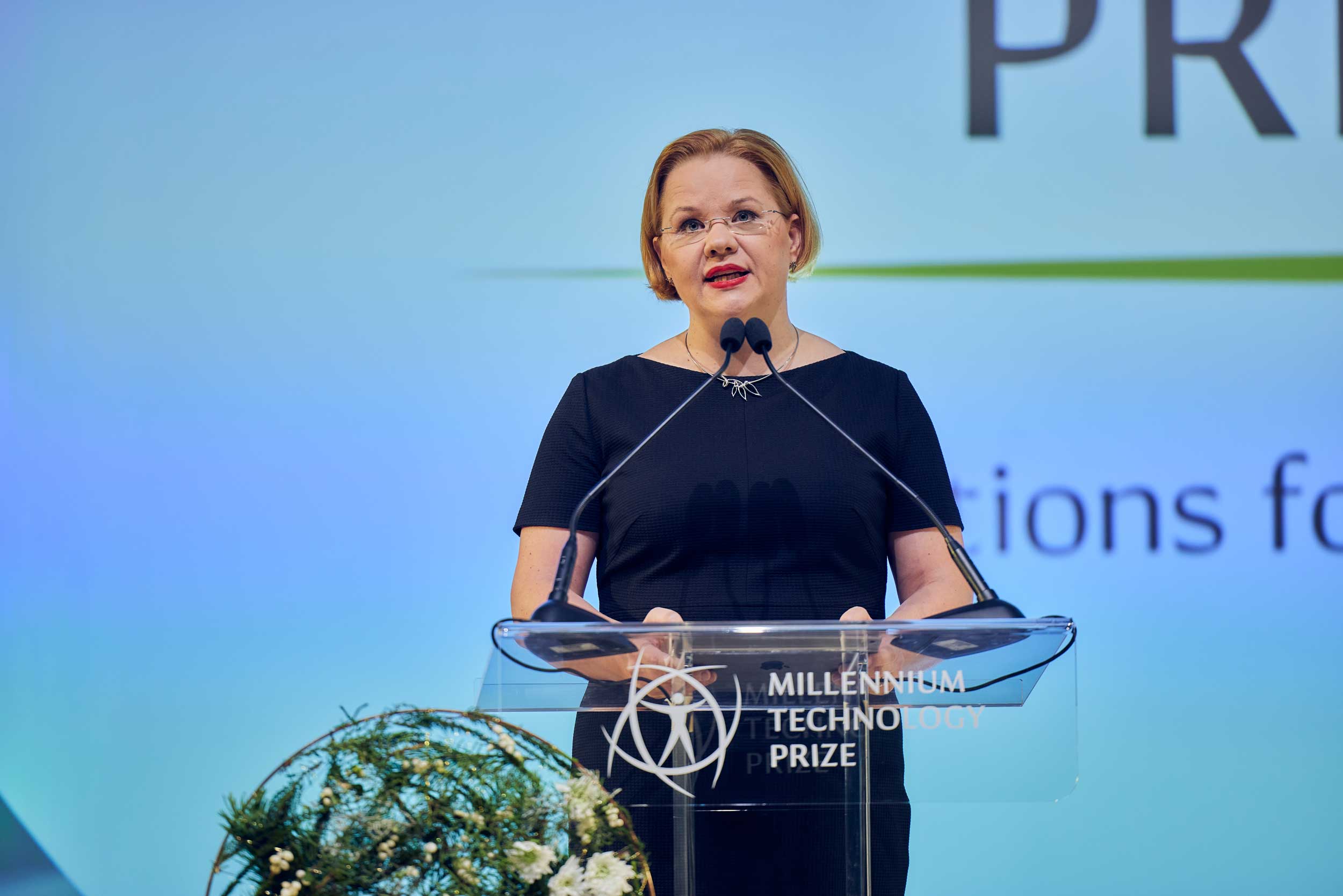Minna Palmroth Presents the Winner of the 2022 Millennium Technology Prize in Award Ceremony

Mr President, your excellencies – dear friends:
Serendipity. This is a word, which means finding valuable things without planning to do so. It’s based on the story of three princes of Serendip that made discoveries by accident.
My favourite story containing a great deal of serendipity tells about possibly the most impactful scientific discovery made during the last 250 years: The discovery of electricity.
In 1780s, in the University of Bologna, Italy, Professor Luigi Galvani was poking dead frogs. He noticed that sometimes the frogs miraculously twitched, although they were surely dead. He explained the phenomenon by a concept of animal electricity, the power that animated living organisms.
His contemporary, Professor Alessandro Volta disagreed. He explained the phenomenon by the presence of two different metals that generated the electricity. This explanation was right and served the basis for batteries as we know them now.
Some forty years later, in 1820s in London, England, Professor Michael Faraday discovered the way in which electricity could be industrially manufactured. Faraday was effectively self-learned, son of the blacksmith’s apprentice. Despite of his background, he became one of England’s greatest scientists of all times, discovering also electromagnetic induction, which we enjoy in our kitchens today. He also proved that there is no animal electricity. Only a single electricity exists, and the different group of phenomena are due to the changing values of quantity and intensity.
The story of discovering electricity is a model example of how science works. There are observations, and erroneous explanations. The right answer is found after a long time, a lot of work and discussions. For spectators, it may seem utterly nonsensical, poking dead frogs for example. But for scientists it’s a quest of trials, errors, frustration, and the joy of finally understanding how things work.
For us Finns, Faraday’s modest background is inspirational. The cornerstone of our education system is exactly that. Every single person counts, in such a small country. Therefore, background should not matter in educating oneself.
Basic science is an investment for a better future. Sometimes the risk is realised, and we never see any return. Sometimes, like in the case of discovering electricity, the return of investment is enormous.
It takes courage to support basic research especially in cases where the direct benefit is not self-evident. It takes grit – or sisu, as we say in Finland – to optimise and develop the fruits of basic research to commercially viable products. Sometimes this takes decades or even centuries.
The Millennium Technology Prize is aimed to celebrate the amazing technological discoveries that change the world. The patron of the Prize, the President of the Republic of Finland, has given the prize on innovations such as the world-wide web, enabling smart technologies, and the next generation DNA sequencing. These innovations ensure for example smartphones and quick vaccinations during pandemics.
Why is she talking about electricity, you might wonder. Because it is context to today’s Prize. Now, we will be celebrating the next chapter in the story of electricity. We are celebrating person, who has made his own definition for the concept of Green Transition.
Dear friends – I am honoured to announce the winner of the 2022 Millennium Technology Prize. The winning innovation has transformed the production of solar energy. The 2022 Millennium Technology Prize is given for the discovery and development of Passivated Emitter and Rear Cell, or PERC Silicon solar cell technology. The winner is Scientia Professor Martin Green from the University of New South Wales, in Sydney, Australia.
My warmest congratulations and admiration to you, Professor Martin Green.
















